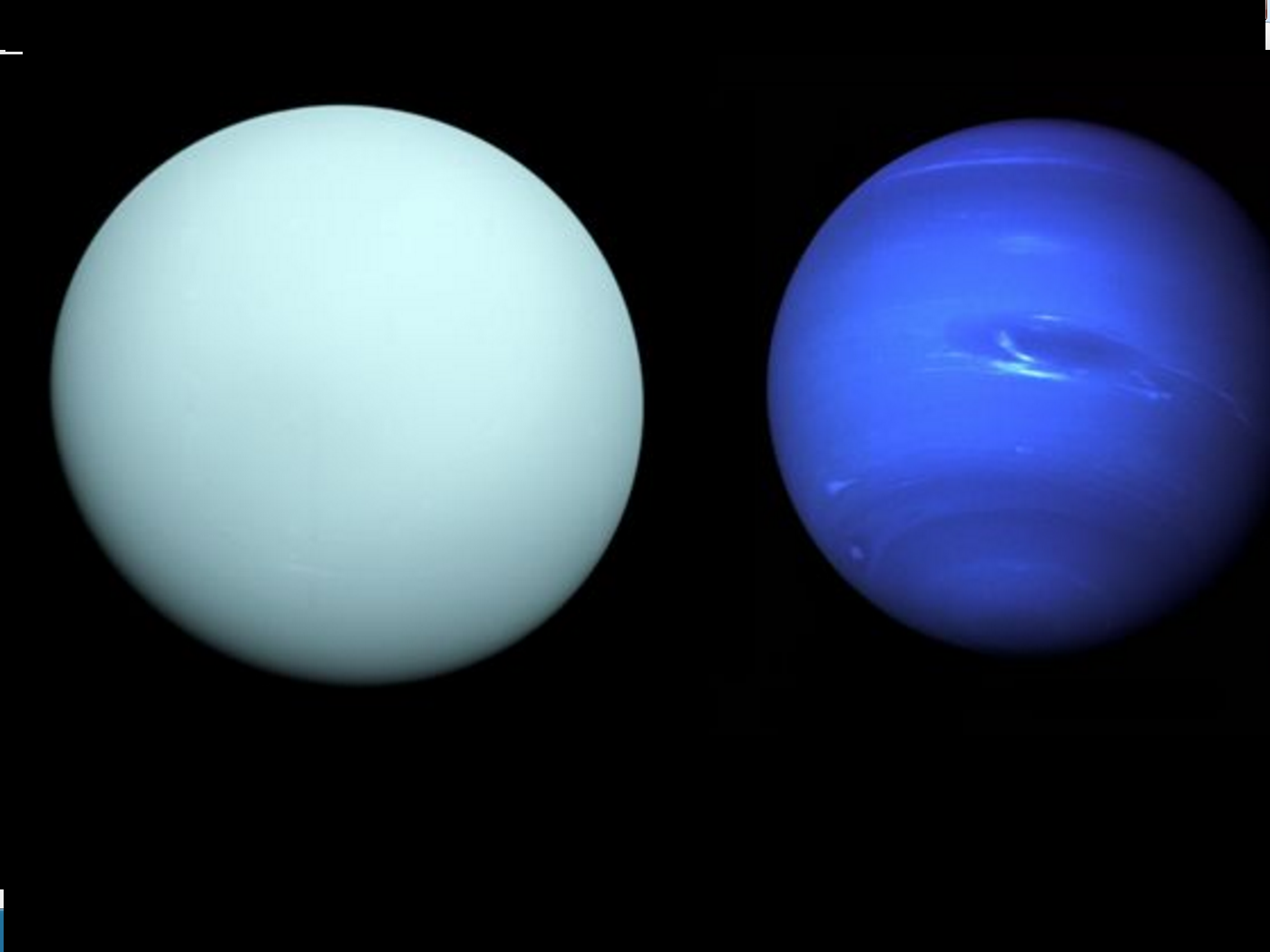Everything that exists today in our Solar System is thought to have formed in a disk of ice, gas and dust called a protosolar nebula (PSN). After the formation, the planets migrated away and went under several changes to become what we see today. It is important to study the giant planets to understand the history of our Solar system.
Uranus and Neptune are called ice giants due to the abundance of heavy elements in them as compared to Jupiter and Saturn(gas giants). Being the farthest planets in our solar system, they are mostly unexplored. Voyager 2, the only spacecraft to briefly fly-by the ice giants, visited Uranus in 1986 and Neptune in 1989.
Image credits: Wikimedia Commons
The last encounter with the icy planets presented us with a mesmerising view of the two alien planetary systems. After more than 30 years, scientists are finally preparing to attempt the first dedicated mission to explore them.
UOP and its Ambition
Every 10 Years, National Academies are tasked by NASA to conduct a “decadal survey” of the planetary science community to set preferred projects for the next decade. The Uranus Orbiter and Probe(UOP) was selected as the top priority for the next large-scale NASA mission in the latest survey called Origins, Worlds and Life (OWL) released in 2022.
As Kathleen E. Mandt, the lead panellist of this survey stated, UOP will focus on scientific objectives such as the formation and evolution of the solar system as well as understanding processes unique to this planetary system. It will also produce findings that will aid in understanding similarly-sized known exoplanets.
UOP mission design contains an atmospheric probe that will measure the nitrogen isotopic ratio and noble gas abundances in the atmosphere of the icy planets. These data will help us verify origin of the formation of planets and their migration.
The reason behind the densely packed narrow rings of Uranus is still unknown to us. Researchers believe that the presence of shepherding moons that keep the rings from spreading out but are too small to be captured by Voyager 2 could be a possibility. Or Uranus’s internal structure might be causing this. UOP will examine Uranus’s core, monitor the ring particles and find out their composition while looking for shepherding moons.
Image Credits: Pixabay
The mission might also provide evidence of a severe collision that turned Uranus on its side at a 98° tilt. The unusual magnetic field which is angled at 60° from its rotational axis does not pass from the planet’s centre, generating extreme seasonal atmospheric changes which are difficult to observe from Earth.
The impact of this on the planet’s atmosphere and its moons will also be studied by UOP. During its 5-year long mission, The probe will measure the temperature and wind at one location while the orbiter will make planet-wide observations to understand how this peculiar atmosphere works.
Voyager 2 had managed to capture evidence of recent resurfacing on five moons of Uranus due to ongoing geological activity out of which Titania, Oberon and Ariel have shown significant resurfacing. These moons could be having oceans of possibly habitable liquid water encased in ice. UOP will photograph the complete surfaces of the moons for new clues and determine whether the liquid water alters the inner magnetic fields of the moons.
Launching mission to the icy planets
In order to take advantage of Jupiter’s powerful gravity to gain speed and travel to Uranus quickly, UOP will be launched by 2032. Following this trajectory, it will arrive well ahead of the 2050 northern fall equinox, allowing for full moon visibility. European Space Agency has also offered to contribute to this mission as it has done several studies on the ice giants.
Image Credits: Pixabay
Although Neptune is also an icy planet, it’s quite far from us and its system is totally different from Uranus and thus cannot be explored by UOP. It is even more challenging to approach. Technological developments in the coming decade might help us to target this planet in the future. Mission to the ice giants, which the world of space scientists has waited for more than 30 years, will be useful for generations to come.
Details about the UOP project were published in the recent issue of Science.
If you enjoyed reading our articles, please consider supporting us by buying our geeky merchandise on Instagram.
Alternatively, you could Buy us a coffee or follow us on Facebook, Twitter, Pinterest or Medium!






